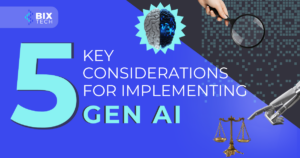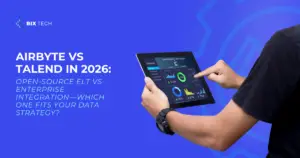Unlocking Efficiency: How Low-Code AI Workflow Orchestration Platforms Are Transforming Business Automation

Sales Development Representative and excited about connecting people
In today’s hyper-competitive business environment, speed and adaptability are everything. Organizations are constantly seeking ways to automate processes, integrate AI, and empower teams—without the lengthy, expensive development cycles of the past. Enter low-code AI workflow orchestration platforms: the next evolution in business automation. But what exactly are they, why do they matter, and how can your organization leverage them for maximum impact? Let’s dive in.
What Are Low-Code AI Workflow Orchestration Platforms?
Low-code AI workflow orchestration platforms are tools that enable users—often with minimal or no coding experience—to design, automate, and manage complex workflows that incorporate artificial intelligence capabilities. These platforms provide visual drag-and-drop interfaces, pre-built integrations, and modular AI components, making it possible to orchestrate everything from data ingestion and model training to real-time decision-making and reporting.
Key Features
- Visual Workflow Designers: Create end-to-end workflows through intuitive interfaces.
- Pre-built AI Modules: Integrate machine learning, natural language processing, and computer vision with ease.
- Seamless Integrations: Connect to databases, cloud storage, APIs, and enterprise systems.
- Automated Monitoring and Scaling: Handle spikes in data or user activity without manual intervention.
- Collaboration Tools: Enable business and technical stakeholders to co-create solutions.
Why Are Low-Code AI Platforms Gaining Popularity?
1. Democratizing AI and Automation
Historically, building AI-powered workflows required specialized skills in data science, software engineering, and cloud architecture. Low-code platforms flatten the learning curve, empowering business analysts, operations managers, and other non-technical stakeholders to prototype and deploy AI-driven solutions.
2. Accelerating Digital Transformation
Speed is a critical competitive advantage. With low-code AI orchestration, organizations can move from idea to deployment in days or weeks—rather than months. This agility is crucial for industries undergoing rapid digital transformation, as highlighted in our guide to digital transformation.
3. Reducing Costs and Resource Constraints
By minimizing the need for custom coding, these platforms significantly cut development costs and free up valuable technical resources. This is especially beneficial for startups and mid-sized companies with limited IT budgets.
Practical Business Applications
Let’s look at how companies are using low-code AI workflow orchestration to drive innovation:
Automated Customer Service
A financial institution leverages a low-code platform to orchestrate customer support workflows. Chatbots, powered by natural language processing modules, handle routine queries, while sentiment analysis flags complex cases for human intervention—all without the need for bespoke coding.
Predictive Maintenance in Manufacturing
Manufacturers are using these platforms to automate data collection from IoT sensors, trigger predictive analytics models, and alert maintenance teams before costly equipment failures occur. For a deeper dive into predictive analytics, check out predictive analytics strategies.
HR and Recruitment Automation
Human resources teams create workflows that screen resumes, schedule interviews, and even assess candidate fit with AI-powered models, streamlining hiring while reducing bias and manual effort. For more on HR analytics, see BI in human resources management.
How to Choose the Right Platform
With the surge in low-code AI orchestration tools, choosing the right platform is vital. Consider these factors:
- Integration Capabilities: Does it connect with your current data sources and business applications?
- AI Model Support: Can you bring your own models or use pre-built ones?
- Scalability: Will it handle increased data volumes and user loads?
- Security and Compliance: Are data privacy and regulatory requirements met?
- Community & Support: Is there active documentation, support, and a user community?
Best Practices for Implementation
1. Start Small, Scale Fast
Begin with a targeted use case—such as automating a repetitive reporting task or integrating a chatbot. Once the workflow delivers value, expand to more complex processes.
2. Foster Collaboration
Encourage cross-functional teams to participate in workflow design. The best results come from combining business insight with technical know-how.
3. Monitor and Optimize Continuously
Track key performance indicators (KPIs) and use the platform’s monitoring tools to refine and improve workflows over time.
The Future: AI and Low-Code—A Perfect Match
Low-code AI orchestration platforms are not just a passing trend. As AI capabilities mature and business demands intensify, these platforms will become the backbone of intelligent automation. They empower organizations to innovate, adapt, and scale at unprecedented speed—regardless of technical expertise.
If you’re ready to unlock new efficiencies and accelerate digital transformation, now is the time to explore low-code AI workflow orchestration. The future of business automation is here—and it’s accessible to everyone.
Further Reading
- Explore how AI-driven innovations are reshaping software development.
- Discover how to unlock efficiency with Scrum methodologies.
Ready to transform your workflows? The journey to effortless automation starts with the right platform—don’t get left behind in the race for digital excellence.









